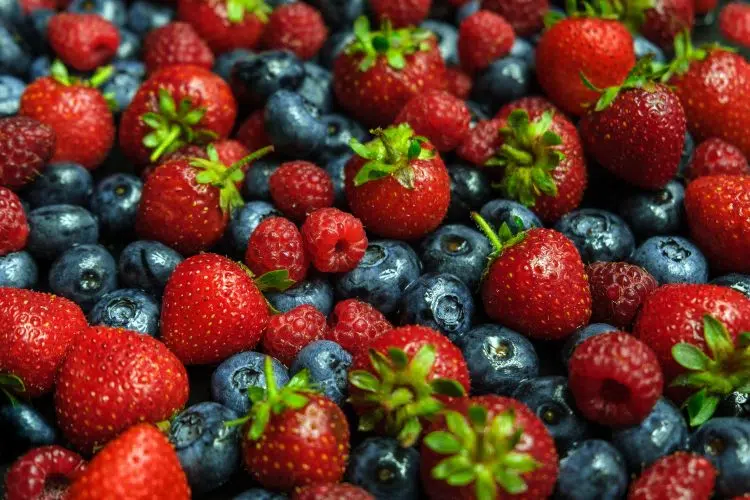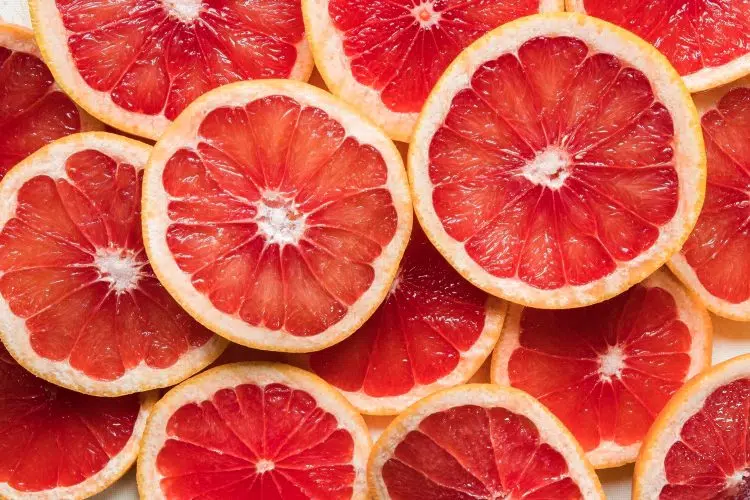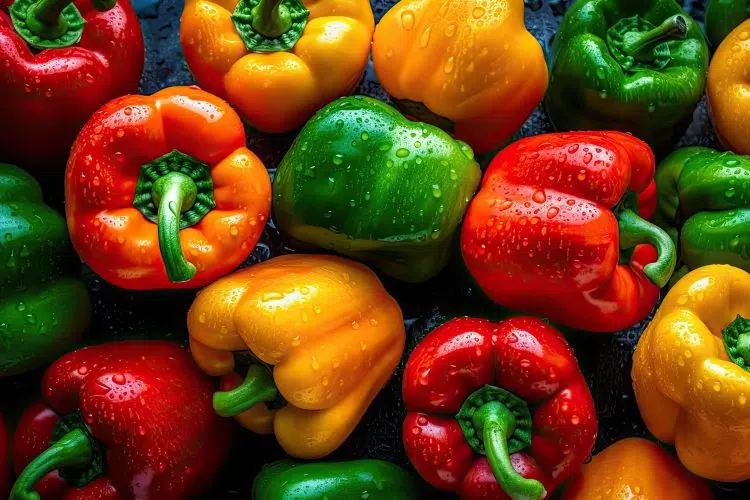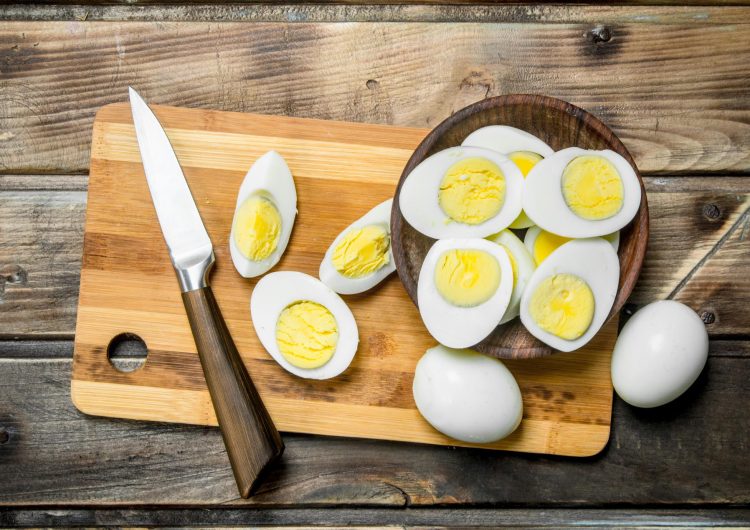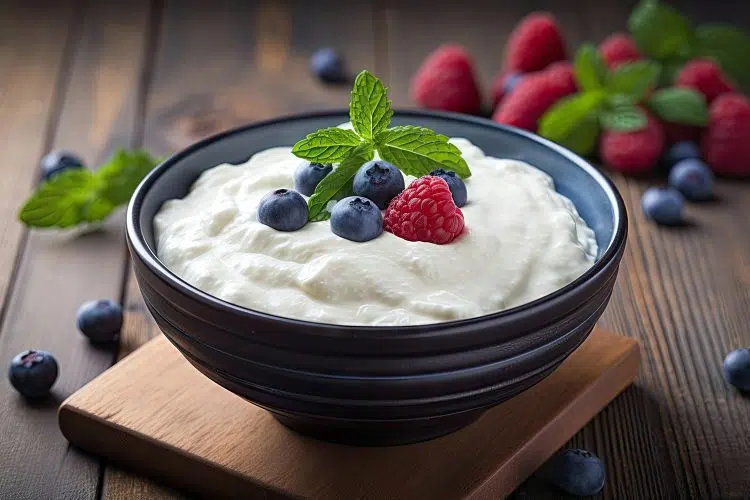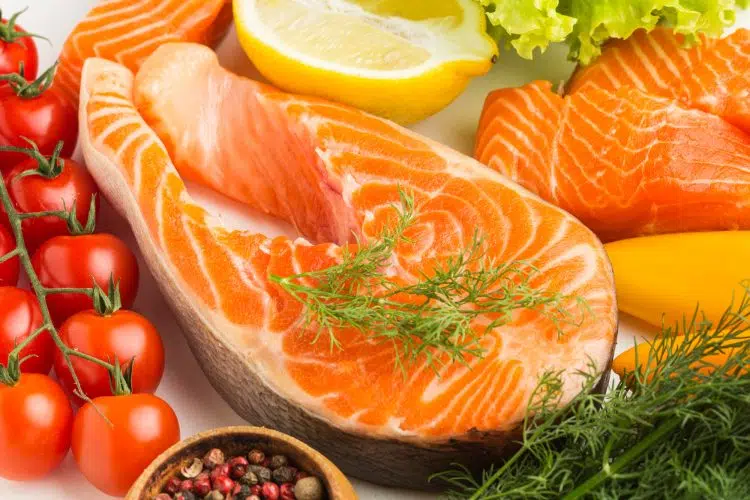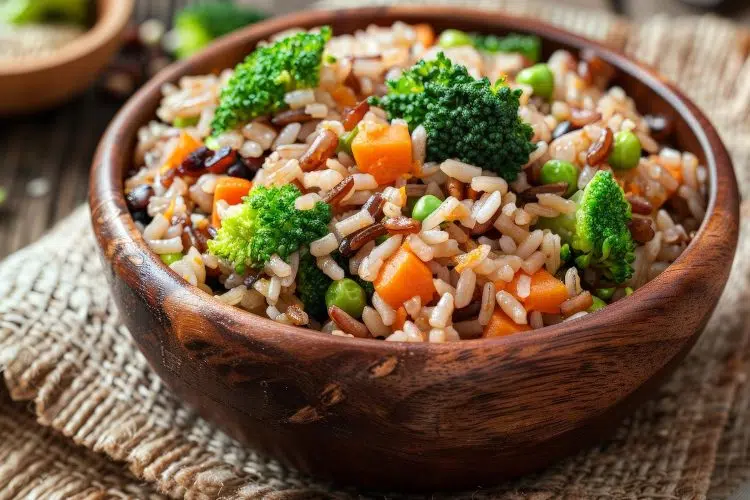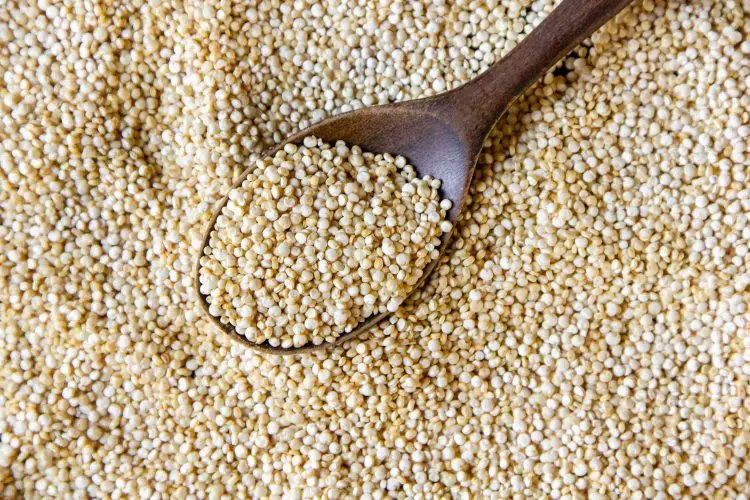Have you ever thought about what makes dieting so challenging that most people give up before achieving their fitness objective? It’s the growling stomach.
A calorie deficit is the holy grail of weight loss. You must expend more calories than you consume daily to shed excess weight and body fat. However, it is easier said than done. Eating fewer calories than you usually do can leave you starving throughout the day.
Besides making you feel uncomfortable, starvation can hamper your mental and physical functionality. More often than not, people give in to the temptation of a quick cheat meal to end their suffering. However, one highly processed snack quickly turns into three to four unhealthy meals.
This is where low-calorie foods shine. These nutrient-dense food sources contain a minimal amount of calories, but their texture, protein, healthy fat, and fiber content help you feel full for longer.
What’s better? You can include these low-calorie foods in your main meals or eat them as snacks throughout the day without disrupting your weight loss journey.
In this article, I share the 20 low-calorie foods that you must include in your diet to ‘eat more, weigh less.’ Bookmark this page so you can access it easily the next time you go grocery shopping.
Level Up Your Fitness: Join our 💪 strong community in Fitness Volt Newsletter. Get daily inspiration, expert-backed workouts, nutrition tips, the latest in strength sports, and the support you need to reach your goals. Subscribe for free!
Understanding Satiety and Its Role in Weight Management
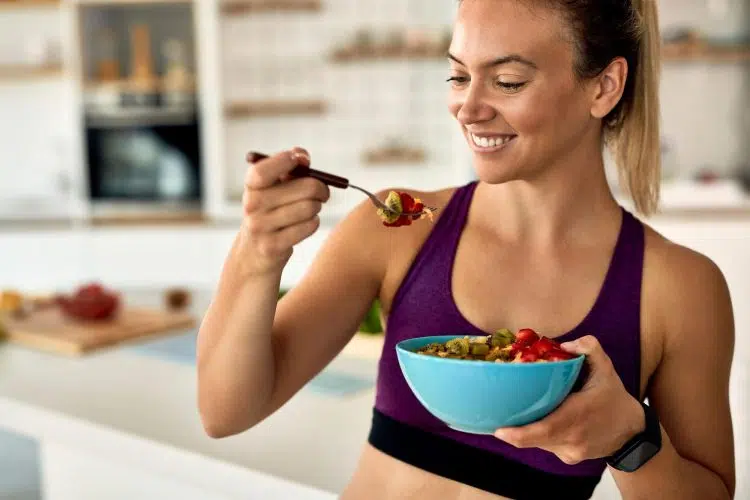
Satiety is key to long-term weight management; there are no two ways about it. It is the feeling of fullness and satisfaction after a meal and what keeps you from raiding the fridge an hour after lunch due to hunger pangs.
During a calorie deficit, you must pick foods that nourish your body and fuel your workouts without moving the weighing scale’s needle in the wrong direction.
Remember, no two foods are created equal when it comes to satiety. Some foods might leave you feeling full from breakfast to dinner, while others might barely make a dent in your hunger levels.
The nutrient profile of these meals is the reason behind this difference, as different ingredients interact with your body uniquely.
These are the three main nutrients you must consider while designing your weight loss diet:
Protein
Protein is the building block of your muscles, and you need at least one gram per kilogram of body weight of this macronutrient during a weight loss program to ensure you don’t lose any muscle tissue. The best part about protein-rich foods is that they are incredibly nutrient-dense. It takes the body more time to digest protein than carbs or fats, keeping you feeling satiated for longer.
Fiber
While macronutrients get a lot of attention when it comes to designing a meal plan, fiber is often overlooked. This nutrient adds bulk to your meals without adding a lot of calories. It slows down digestion, promoting a feeling of fullness and helping you avoid snacking on processed foods.
Healthy Fats
Contrary to what most people think, fats are not the enemy during a weight loss program. Healthy fats, like those found in avocados, nuts, seeds, and olive oil, contribute to satiety by slowing down the digestion process and preventing overeating.
The 20 Low-Calorie, Filling Foods
Below, I’ve listed the 20 low-calorie foods in different food categories that you must add to your diet plan:
Fruits & Vegetables
1. Apples
I absolutely adore apples, as they are sweet, crunchy, and, most importantly, very calorie-dense. One medium apple contains around 95 calories, four grams of fiber, and 8.5 mg of vitamin C.
You can eat this versatile fruit before, during, or after a workout. You can also add apples to your other meals to make them more nutrient-dense. The fiber in apples slows digestion, keeping you full for longer.
Recipe: Apple Cinamon Overnight Oats
- Add half a cup of rolled oats, milk, and chopped apple in a blender.
- Sprinkle cinnamon on top.
- Blend, but ensure you still have slices of apple.
- Drizzle honey over the top.
- Refrigerate overnight and enjoy for breakfast.
2. Cucumbers
Cucumbers are one of the most refreshing foods and contain only 16 calories per cup. While most people include them in salads, you can add them to sandwiches and wraps to make your snacks more satisfying.
Recipe: Cucumber and Tomato Salad
- Combine sliced cucumbers, tomatoes, and red onion for a satisfying snack.
3. Broccoli
Brocolli is a hit among fitness enthusiasts. It contains just 30 calories per cup and is packed with fiber and vitamins A, C, and K. That’s not all; eating a cup of broccoli will keep you feeling full for long hours. You can incorporate this versatile food as a side dish in virtually any meal.
Recipe: Roasted Broccoli with Garlic and Parmesan
- Toss broccoli florets with olive oil, minced garlic, salt, and pepper.
- Roast at 400°F until tender-crisp.
- Sprinkle with Parmesan cheese.
- Serve hot.
4. Leafy greens (spinach, kale, lettuce)
I usually add leafy greens to my main meals as they are nutrient-dense and incredibly low in calories (10-20 calories per cup). Leafy greens have a generous amount of vitamins, minerals, and fiber content, which promotes satiety.
Recipe: Spinach Strawberry Salad
- Add spinach, sliced strawberries, almonds, and a light balsamic vinaigrette.
5. Berries (strawberries, raspberries, blueberries)
Berries are delicious and one of the best sources of antioxidants. A cup of berries contains around 60 to 80 calories. The high fiber and water content of berries contribute to a feeling of fullness and help avoid hunger pangs.
I prefer adding berries to my smoothies, yogurt, and salad. Nonetheless, they also make a delicious and healthy snack on their own.
Recipe: Berry Parfait
- Pour Greek yogurt into a glass.
- Add a layer of berries.
- Sprinkle granola on top.
6. Carrots
If you are feeling hungry and don’t have enough time to cook a healthy meal, you cannot go wrong with a carrot. It contains around 50 calories per cup and is a good source of beta-carotene.
Carrots have a high water and fiber content, which contributes to satiety. You can also add them to salads, include them in your meal, or eat them as side dishes.
Recipe: Carrot Ginger Soup
- Sauté chopped carrots and ginger in olive oil.
- Add vegetable broth and simmer until carrots are tender.
- Blend until smooth.
7. Grapefruit
This fruit is my go-to whenever I’m craving something tangy. Half a grapefruit has 50 calories and is packed with vitamin C. Its high water and fiber content promotes satiety. Enjoy half a grapefruit as a breakfast or snack option.
Recipe: Broiled Grapefruit with Honey
- Slice a grapefruit in half.
- Drizzle with honey.
- Broil for a few minutes until slightly caramelized.
8. Oranges
Most people love oranges. They are sweet and tangy and can be enjoyed as a snack, juice, or in a salad. This fruit is an excellent source of vitamin C, containing 60 calories per medium orange.
Level Up Your Fitness: Join our 💪 strong community in Fitness Volt Newsletter. Get daily inspiration, expert-backed workouts, nutrition tips, the latest in strength sports, and the support you need to reach your goals. Subscribe for free!
The fiber and water content of an orange contributes to satiety, meaning the juicier an orange, the more satisfying it is.
Recipe: Orange and Avocado Salad
- Combine slides of orange, avocado, red onion, and a cilantro lime vinaigrette.
9. Peppers
Bell peppers are often overlooked in a diet. These colorful vegetables are low in calories (around 30 calories per cup) and high in Vitamin C. Like oranges, their high fiber and water content keep you feeling full for longer.
Recipe: Stuffed Bell Peppers
- Fill bell pepper halves with a mixture of cooked quinoa, ground turkey, vegetables, and spices.
- Bake until tender and heated through.
10. Tomatoes
Thanks to all the social media trivia posts, you probably already know that a tomato is a fruit. It is low in calories (around 25 kcal) and packed with lycopene, an antioxidant. The water content in tomatoes keeps hunger pangs at bay.
Recipe: Caprese Salad
- Layer sliced tomatoes, fresh mozzarella, and basil leaves.
- Drizzle with balsamic glaze and olive oil.
Protein Sources
11. Eggs
Eggs are a staple in most bodybuilding diets, and for good reason. A large egg contains around 70 calories and six grams of protein, which helps promote satiety and preserve muscle mass. You can include scrambled, fried, poached, or hard-boiled eggs into your diet.
Recipe: Veggie Omelet
- Sauté your favorite vegetables (spinach, mushrooms, peppers) and add them to a beaten egg mixture.
- Cook until set.
Try our egg protein calculator.
12. Lentils
These legumes are one of the most effective and cost-effective sources of protein. They contain around 230 calories and 18 grams of protein per cooked cup. Protein combined with fiber is what makes lentils a superfood.
Recipe: Lentil Soup
- Sauté onions, carrots, and celery in olive oil.
- Add lentils, vegetable broth, and spices of choice.
- Simmer until lentils are tender.
13. Greek yogurt
It contains around 17 grams of protein and 100 calories per 5.3-ounce container, making it a must for people trying to lose weight. As discussed above, protein is a potent macronutrient for promoting satiety and boosting muscle mass.
Recipe: Tzatziki Sauce
- Combine Greek yogurt, grated cucumber, minced garlic, lemon juice, olive oil, and dill for a healthy dip.
14. Tofu
Lentils and tofu are the most prominent sources of protein for vegans. Tofu is a soy-based protein source that offers around 80 calories and eight grams of protein per half a cup. Tofu’s protein content and dense texture promote satiety for extended periods.
Recipe: Tofu Scramble
- Crumble a brick of tofu.
- Sauté it with onions, peppers, and spices.
- Consume as a main dish.
15. Wild salmon
Salmon is packed with protein and healthy fats, containing around 180 calories and 22 grams of protein per three-ounce serving, along with omega-3 fatty acids. The two macronutrients are incredibly satiating and will keep you feeling full for longer.
Recipe: Baked Salmon with Lemon and Herbs
- Season salmon fillets with lemon juice, herbs (dill, parsley), salt, and pepper.
- Bake at 400°F until cooked through.
16. Turkey breast
Turkey breast can be more satiating than chicken breast as it contains around 125 calories and 26 grams of protein per three-ounce serving. It is also more versatile, and its slices can be added to sandwiches, salads, soups, or stews.
Recipe: Turkey Lettuce Wraps
- Fill lettuce leaves with sliced turkey breast, avocado, tomato, and a light dressing.
Whole Grains
17. Brown rice
This whole grain contains around 215 calories and five grams of protein per cooked cup. The higher fiber content of brown rice promotes satiety and improves digestion.
Recipe: Veggie Fried Rice
- Sauté your favorite vegetables (carrots, peas, broccoli) with cooked brown rice, eggs, and soy sauce.
18. Oatmeal
Oatmeal is one of the healthiest breakfast options for folks on a weight loss journey. It offers around 150 calories and six grams of protein per cooked cup. The high fiber content of this food source prevents hunger pangs and improves digestion.
Recipe: Baked Oatmeal with Apples and Cinnamon
- Combine rolled oats, milk, chopped apples, cinnamon, and a touch of maple syrup.
- Bake until golden brown.
19. Quinoa
This is one of the few ancient grains that is a complete protein, meaning it contains all nine essential amino acids. Quinoa offers around 220 calories and eight grams of protein per cooked cup.
The protein and fiber content of this grain promotes satiety for extended hours.
Recipe: Quinoa Salad with Mediterranean Flavors
- Combine cooked quinoa, chopped cucumbers, tomatoes, olives, feta cheese, and a lemon herb vinaigrette.
20. Whole-wheat bread
The humble whole-wheat bread needs no introduction. It contains around 80 calories and four grams of protein per slice. It also offers a healthy amount of fiber, which promotes satiety and regulates digestion.
Recipe: Avocado Toast with Egg
- Toast a slice of whole-wheat bread.
- Top with mashed avocado and a fried egg.
- Sprinkle red pepper flakes.
Conclusion
When you are trying to eat more and still weigh less, you must pick foods that fill you up without filling you out. There’s a thin line separating the two. Satiating foods reduce your calorie intake, prevent overeating, and supercharge your weight loss journey.
Add the 20 low-calorie food sources listed above to your diet to promote satiety and eliminate cravings while trying to lose weight. The accompanying recipes are delicious, super easy to prepare, and a must-try.
If you have any questions about these low-calorie foods or need help implementing them into your diet, post your queries in the comments below, and I’ll be happy to help!



